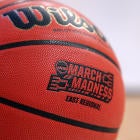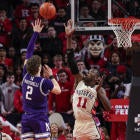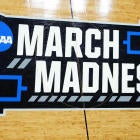The NCAA Tournament selection committee sent some pretty consistent messages when it selected and seeded this year.
First and foremost: Quality wins matter. However, it is not as simple as counting them. The number of opportunities to get those wins is important too. For teams like Middle Tennessee and St. Mary's, we may hear the familiar refrain that quality teams won't play them. However, the Blue Raiders did play three quality opponents -- and went 0-3.
The Gaels did themselves in by not even scheduling a quality non-conference opponent. They do have Gonzaga in their league, but if New Mexico State is your best non-conference opponent, the committee will not be impressed. All three of their quadrant 1 games were conference games. Saint Mary's had an overall strength of schedule of 169. The worst schedule strength for any at-large team is St. Bonaventure's 89.
However, this treatment was not limited to non-majors. USC was left out for the same reason. Like Saint Mary's, the Trojans' best win was New Mexico State. They also beat Middle Tennessee. They scheduled Texas A&M and Oklahoma in non-conference play and played five games against tournament teams in conference and lost them all. They also had four non-tournament losses, including Princeton at home. USC now holds the record for the best RPI ranking for a major conference team that missed the tournament at 34.
Syracuse was able to get in partially because it beat two top half of the bracket teams in Clemson at home and a road game at Miami. They also played a strong non-conference schedule, which is something that is not typical of the Orange. They could have legitimately left Syracuse out, but there wasn't another team any more worthy to put in We needed one more bid-stealer.
Oklahoma and Arizona State were both rewarded for strong first halves of the season and seeded more in accordance with their relative collapses. The Sooners are a 10 and the Sun Devils are an 11 playing the Orange in Dayton. The committee has consistently said for well over decade that how you finish doesn't matter. The selection of Oklahoma and Arizona State should cement that message. ASU now ties the record for the most losses to non-tournament teams for a team in the field.
Notre Dame was the team that was kicked out when Davidson won. The Irish's resume was soft, even with consideration given to the absences of Bonzie Colson and at times, Matt Farrell. It would have been the first time a team was selected largely due to consideration given to an injured player. ND had a big win over Wichita State, but also lost to Ball State at home and against Indiana with Colson in the lineup.
Quality wins mattered at the top of the bracket too, where Kansas was a No. 1 seed despite a record tying seven losses. The Jayhawks had 12 quadrant 1 wins, a number only topped by North Carolina. The Tar Heels had 14 Q1 wins and 10 losses, but still merited a No. 2 seed. UNC was the top two seed.
The regions are reasonably well balanced, although according to the 1-68 team rankings, Kansas has the toughest regional. The overall No. 3 Jayhawks are bracketed with No. 6 overall Duke, No. 9 Michigan State and No.13 Auburn. That is a total of 31. The other three regions add up to 35. The Blue Devils and Spartans played each other in the regular season, with Duke winning 88-81.
So, while people are upset at Oklahoma's seed or Syracuse's selection, I think those are consistent with the messages the committee was trying to send.





















